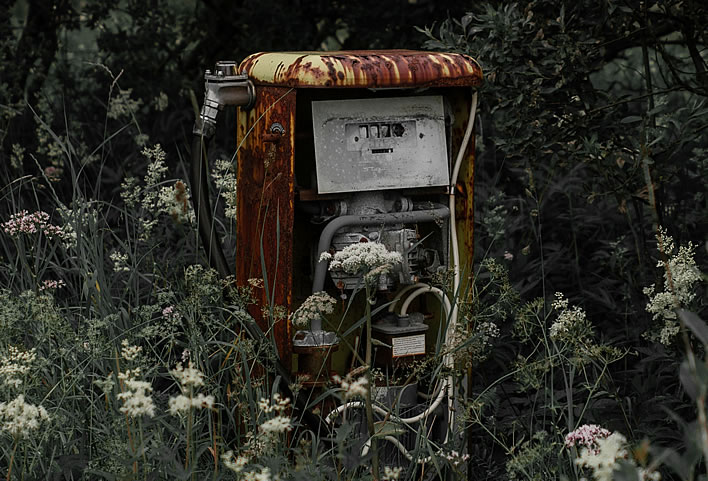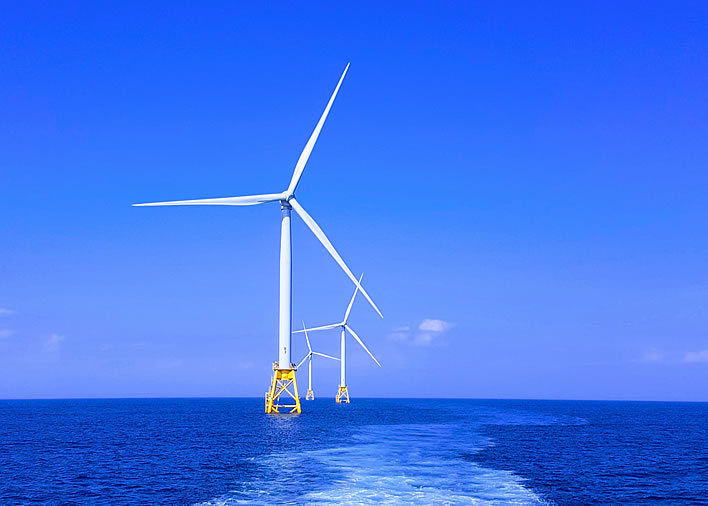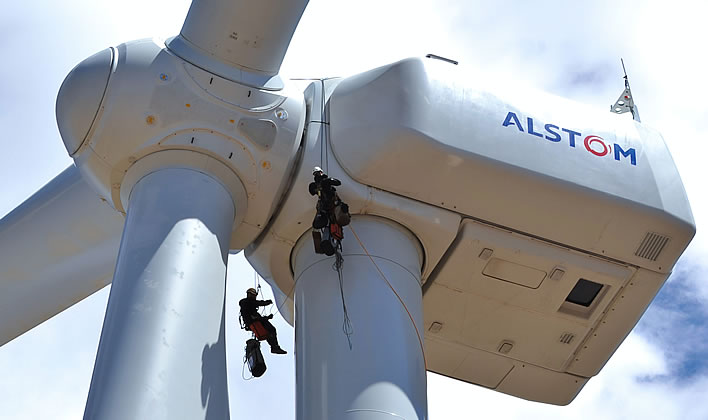Sanity-checking insane energy
Posted by Thersites on UTC 2020-08-21 06:22
Engineers have a technique called the 'sanity check', a quick, simple, rational test of whether a calculation or plan can possibly be true.
A key property of the sanity check is its simplicity: it should be so simple that its working out is beyond question; being simple it is also quick; being quick it is also cheap. The best sanity check is not merely a simplified repetition of the main workings of the plan it is supposed to be checking, but approaches the issue from a completely independent direction.
The term sanity check has much in common with that other engineer's favourite, the back-of-an-envelope calculation. The shorter the calculation or the sanity check, the more likely it is not to introduce egregious errors or make unfounded assumptions. We used the term last year in a discussion of climate 'facts'.
The fossil fuels that never peaked

The green world shall reclaim the debris of the fossil fuel economy. Image: © Olav Tvedt, Unsplash.
After the 'peak oil' fright of the 1960s the disciples of the theory started the search for 'renewable' sources of energy that would not simply run out like fossil fuels must. It was a half-hearted search, since in the following decades more and more coal, gas and oil were being discovered and extracted. The date for peak oil was pushed inexorably ever further into the future.

Oil and gas from the roots of the world, discovered and extracted by remarkable technological progress. Image: © Grant Durr, Unsplash.
In the 1990s the carbon dioxide fright began. Within a few years the supposedly harmful effects of carbon dioxide emissions from fossil fuels on the climate of the earth were pumped up into becoming the top policy concern for 'the planet'. Combatting the threat became the top priority for all governments.

The black gold that had powered an industrial revolution. Image: © Simon Basler, Unsplash.
Under this pressure to move away from fossil fuels, the implementation of renewable energy systems suddenly became a top priority.
Hydroelectric power
One renewable was technologically unproblematic and can survive a sanity check: hydroelectric power. Its greatest advantage is that, like fossil fuels, it is not intermittent and can be generated on demand.

Hydroelectric power, good in some places, 1. Image: © Cédric Dhaenens, Unsplash.
But unfortunately that is the only advantage it has. Very few places in the world are suitable for hydroelectric systems – there has to be a reliable supply of water in sufficient quantities and with a suitable height difference. Hydroelectric power is not hydrologically neutral, even small schemes can disrupt local water systems. Furthermore, hydroelectric power is as good as its name: it can only feed electrical power into a distribution grid. It does nothing for the local non-electric consumers of fossil fuels such as transport vehicles.

Hydroelectric power, good in some places, 2. Image: © Lode Lagrainge, Unsplash.
Counter-intuitively perhaps, hydropower is not cheap. On the contrary, in hydro-land Switzerland, for example, it is a very expensive form of energy generation: the locals own the rain that falls on their heads and have to be paid for the use of the water from their catchment area; by the time it passes through the turbines it is an expensive commodity indeed. Many existing plants cannot compete with the currently low (raw) energy prices for gas.
The proposition from the devotees of 'Peak Oil' theory was that as fossil fuels inexorably became scarcer they would inexorably become more expensive. The fact is that half a century after the theorising, fossil fuels are still so plentiful and so cheap that they have turned every form of renewable energy – particularly hydroelectric power – into an insupportable luxury. The fantasy of expensive fossil fuels is still spooking around in green heads today, blinding them to the reality of energy economics.
Wind and solar
The other two principal suppliers of renewable power are wind and solar. Neither of them can survive the simplest sanity check.

No such thing as a free lunchtime energy source. Image: © Zbynek Burival, Unsplash.

Wrecking the seabed. Image: © Shaun Dakin, Unsplash.
Just like hydroelectric power plants, wind and solar only generate electricity. Each has its own long list of disadvantages, but they both share a common disadvantage which should rule them out of further consideration as energy sources: they are intermittent, each in its own characteristic way.
The sanity check is a simple one: for every unit of renewable capacity provided, there has to be a unit of dispatchable capacity permanently available – during the night and during bad weather for solar, at times of too little and too much wind for wind power. Thus a complete non-intermittent infrastructure has to be maintained permanently and expensively on standby. For every GW of intermittent electrical generation that is installed, a GW of non-intermittent, rapidly despatchable generation has to be installed, paid for and maintained.

Replacing a fuse. Image: © Science in HD, Unsplash.
The sanity check gives us a simple answer: these systems will never work reliably or efficiently. No energy storage systems capable of making up efficiently for the inherent intermittency are available or will be available in the foreseeable future.
The sanity check for the use of batteries to compensate for intermittency barely needs the corner of an envelope – the back of a postage stamp would provide sufficient space to show that batteries will never be able to do that job. Remember: in medium to high latitudes a solar panel is dormant for somewhere around eighteen hours on average – at times of clear skies.
Thus, intermittent generators are not and never will be a match for a tank of liquid or gaseous hydrocarbons. We scrumple up the envelope with our calculation on it and throw it in the bin send it for recycling.

All energy will electrical and all will come via the grid. Image: © Fré Sonneveld, Unsplash.
All the renewable energy sources so far only feed electric power into a distribution grid. Fossil fuels supply energy directly to power consumers – aircraft, cars, trucks, buses, motorcycles, construction vehicles and all kinds of machinery. The problem of replacing fossil fuels consumed directly by local power consumers with electricity taken from the grid has not been solved. A simple sanity check is enough to tell us that such an immense extra load on the grid, particularly with very slow charging times, will never work.
In, say, 1990 a few envelope backs would have told us that we should never have begun with the development of the renewable energy sources we have today.
The fact that so many of the governments in the world did go down the renewables route is evidence of the deep stupidity of the political class worldwide and the corruption inherent in the application of unimaginably large amounts of taxpayers' money. Once you have identified a planet-wide problem, its solution, forced despite all sanity checking, is inevitably going to be a planet-wide shambles.
Hydrogen
At the moment, one renewable source stands apart from this judgement: hydrogen. Except that it is not a source of renewable energy, it is merely a medium of storage and distribution. Nevertheless, hydrogen is currently being pushed as the clean fuel capable of being used by off-grid consumers.
A quick sanity check comes close to ruling hydrogen out as a viable future technology. Now that the futility of the development of the other renewables has become clear to the few people who are still reality-aware, hydrogen has become the new big thing. Germany (foremost among others) has just nailed its flag to hydrogen in the same way that it nailed its flag to renewables in the 1990s.
Hydrogen as a fuel passes that very specific sanity check: hydrogen burnt in oxygen/air leaves only water behind; hydrogen can be oxidised in a fuel cell to produce electricity. So far so good, but many other problems have to be taken into consideration, problems such as hydrogen's low energy density, the fact that it is an exceptionally light gas which has to be not only compressed but also liquefied to extremely low temperatures before it can be stored or transported. If hydrogen were cheap and plentifully available those drawbacks and distribution costs might be acceptable. But it isn't, a truth which is the biggest factor in the sanity check.
Once more: hydrogen is a storage and transmission medium, not a source of energy. There are no hydrogen mines; we cannot drill down for it as we can for natural gas or oil. It has to be made, but making it requires immense amounts of expensive energy (and the most viable system produces huge amounts of carbon dioxide, which is not the idea at all). A hydrogen economy will require the rapid construction of distribution networks just as large as those used for fossil fuels.

Space in the middle for the hydrogen pump. Image: © Ashlee Attebery, Unsplash.
Add to that the difficulties of storage and transport and suddenly the results of a sanity check look very different. In short, we have to put in much more energy than we can get out. The efficiency of the start-to-end process is terrible. Currently, hydrogen produced as a by-product of other processes can be used to supply the tiny existing demand. It's cheap, too, because in the industrial process that produces it it is essentially a nuisance, a waste product that might be burned off. But when energy consumers start relying on hydrogen, where is all this gas going to come from? And at what price?
Technological developments are taking place for the point of consumption (e.g. fuel cell systems), but the grave problems of generation and efficient distribution are still unresolved. Just as with the renewables boom in the 1990s, various fudges and tweaks are being suggested but these still founder on the sanity check.

The Germans on the road to Morocco – like Webster's Dictionary they're Morocco bound. Image: © Andrea Cappiello, Unsplash.
The German government, desperate to get its brave new hydrogen world going, has come to an agreement with Morocco (ironically a country currently dependent upon coal) to generate electricity from solar power stations, which will then be used to make hydrogen.
The technological challenges – the costs of freezing, compression and transmission – are still immense and defy all sanity checks; the political challenges are also considerable: outsourcing a crucial part of your energy system to African states sounds like a strategic mistake of the first order.
0 Comments UTC Loaded:
Input rules for comments: No HTML, no images. Comments can be nested to a depth of eight. Surround a long quotation with curly braces: {blockquote}. Well-formed URLs will be rendered as links automatically. Do not click on links unless you are confident that they are safe. You have been warned!